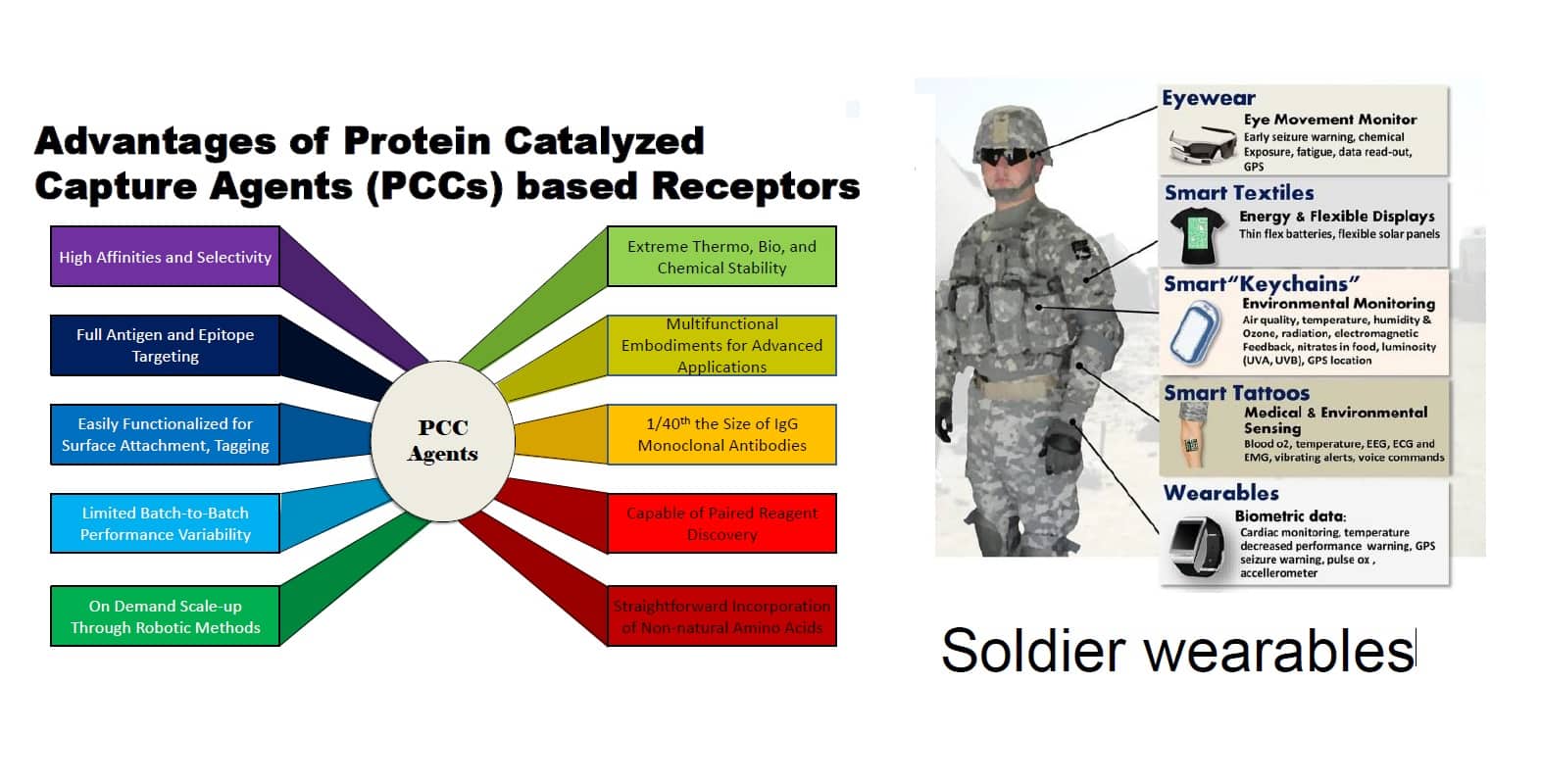The U.S. Army has newly disclosed details on the development of biosensor technologies to benefit future warfighter.
The researchers’ group is currently working on peptide-based receptor development for potential integration into wearable biosensors, according to new data from the U.S. Army Combat Capabilities Development Command Army Research Laboratory.
In the multifaceted operational environments of future wars, Army forces will need to be more adaptive and optimized for execution. The development and production of ruggedized biosensors can provide real-time feedback for soldier health, performance, and biothreats.
The new technology will use Protein Catalyzed Capture agents based receptors, that should provide a rate of detection three times faster when carbon nanotubes are used in the nano-biosensor construction, preventing the attachment of the protein to the device components.
The change in electric resistance of carbon nanotubes when proteins touch them is immediate, which confer to the device a fast recognition ability, and leads to increased efficiency of the biosensor.
The new biosensors will be embedded under or on the skin and designed to find a specific molecule and signals from body.
Cutting-Edge technology will support water and food defense, individual soldier protection, collective protection and soldier health monitoring.
Protein Catalyzed Capture agents will be integrated into silicon-based photonic integrated circuits sensors to provide multiplex detection with true portability and high accuracy for Department of Defense relevant applications.
Peptide-based receptors fulfill the need for alternative antibodies by addressing critical gaps in adaptability, manufacturability, and stability. Also, PCCs can be integrated into multiple platforms for real-time monitoring of biothreats and soldier health and performance.
